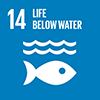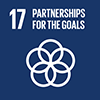Description/achievement of initiative
The IAEA Technical Cooperation (TC) Programme offers a unique programme for its Member States to work towards the United Nations Sustainable Development Goals by building necessary capacities in the application of nuclear technology. This interregional project aims at supporting the human and institutional capacity of SIDS in key areas such as human health, nutrition, food, agriculture, water management, marine environment as well as safety and security through knowledge and experience-sharing among SIDS.
Implementation methodologies
The National Steering Committee will be established by the National Liaison Officers (NLO) and include all counterparts and relevant stakeholders for each thematic area. SPC may support the DTM with the implementation and coordination of the project in the Pacific. A Resource Mobilization Committee will be established to ensure continuous involvement with opportunities for outreach and partnership building. Members will include the IAEA, including the TCPC Strategic Partnership Section, DTM, SPC, CARICOM, UNEP – CARRCU, SPREP, UWI and USP. They will meet on a regular basis and leverage existing regional and interregional meetings and conferences to conduct outreach and resource mobilisation activities. The Committee will develop strategies based on a consultative process with all participating countries. The process will be supported by the IAEA who will disseminate relevant information about upcoming opportunities and invite countries to provide relevant inputs, to be collected and synthesized by the DTM in preparation for the meetings.
Arrangements for Capacity-Building and Technology Transfer
Nuclear techniques will be used in agriculture, radiation medicine and in marine environment. Isotopic techniques will be utilized in nutrition. The above mentioned applications have shown sound advantages in the TCP, where IAEA plays a partner role with the countries providing technical, management and financial assistance to build human and institutional capacities.
Coordination mechanisms/governance structure
The project aims to develop adequate human resources in SIDS in the application of nuclear technology in key thematic areas. Furthermore, the project aims to actively promote networking and knowledge management among SIDS and to strengthen the existing physical infrastructure for the application of nuclear. The project intends to facilitate the signature of cooperation agreements among capacity building centers within SIDS regions that contribute to the sustainability of the project deliverables. In the first year, project is planned to precisely identify gaps and capabilities and willingness of existing institutions to act as future capacity building centres. In the following two years, the project will be focusing on delivering trainings and expert missions to leave the last year for consolidation of the expected results. Furthermore, all participating Member States agree to establish a National Steering Committee that will meet once per quarter to coordinate the implementation of planned activities and coordinate with the Designated team Member (DTM) to facilitate the interregional implementation process.
Partner(s)
The IAEA will engage organizations such as the Pacific Community, the Caribbean Community, international development banks and UN agencies for financial and infrastructure support in food and agriculture, water and the environment as well as health and nutrition. In addition, members of the Pacific Region Infrastructure Facility (PRIF), which include the Asian Development Bank, the Australian Department of Foreign Affairs and Trade, the European Union, the European Investment Bank, the Japan International Cooperation Agency, the New Zealand Ministry of Foreign Affairs and Trade, the World Bank and the United States States, will be engaged.
Progress reports
Goal 2
2.1 - By 2030, end hunger and ensure access by all people, in particular the poor and people in vulnerable situations, including infants, to safe, nutritious and sufficient food all year round
2.2 - By 2030, end all forms of malnutrition, including achieving, by 2025, the internationally agreed targets on stunting and wasting in children under 5 years of age, and address the nutritional needs of adolescent girls, pregnant and lactating women and older persons
2.3 - By 2030, double the agricultural productivity and incomes of small-scale food producers, in particular women, indigenous peoples, family farmers, pastoralists and fishers, including through secure and equal access to land, other productive resources and inputs, knowledge, financial services, markets and opportunities for value addition and non-farm employment
2.4 - By 2030, ensure sustainable food production systems and implement resilient agricultural practices that increase productivity and production, that help maintain ecosystems, that strengthen capacity for adaptation to climate change, extreme weather, drought, flooding and other disasters and that progressively improve land and soil quality
2.5 - By 2020, maintain the genetic diversity of seeds, cultivated plants and farmed and domesticated animals and their related wild species, including through soundly managed and diversified seed and plant banks at the national, regional and international levels, and promote access to and fair and equitable sharing of benefits arising from the utilization of genetic resources and associated traditional knowledge, as internationally agreed
2.a - Increase investment, including through enhanced international cooperation, in rural infrastructure, agricultural research and extension services, technology development and plant and livestock gene banks in order to enhance agricultural productive capacity in developing countries, in particular least developed countries
Goal 3
3.2 - By 2030, end preventable deaths of newborns and children under 5 years of age, with all countries aiming to reduce neonatal mortality to at least as low as 12 per 1,000 live births and under-5 mortality to at least as low as 25 per 1,000 live births
3.9 - By 2030, substantially reduce the number of deaths and illnesses from hazardous chemicals and air, water and soil pollution and contamination
Goal 13
13.1 - Strengthen resilience and adaptive capacity to climate-related hazards and natural disasters in all countries
13.2 - Integrate climate change measures into national policies, strategies and planning
13.3 - Improve education, awareness-raising and human and institutional capacity on climate change mitigation, adaptation, impact reduction and early warning
Goal 14
14.1 - By 2025, prevent and significantly reduce marine pollution of all kinds, in particular from land-based activities, including marine debris and nutrient pollution
14.2 - By 2020, sustainably manage and protect marine and coastal ecosystems to avoid significant adverse impacts, including by strengthening their resilience, and take action for their restoration in order to achieve healthy and productive oceans
14.3 - Minimize and address the impacts of ocean acidification, including through enhanced scientific cooperation at all levels
Goal 17
17.3 - Mobilize additional financial resources for developing countries from multiple sources
17.9 - Enhance international support for implementing effective and targeted capacity-building in developing countries to support national plans to implement all the sustainable development goals, including through North-South, South-South and triangular cooperation
17.16 - Enhance the global partnership for sustainable development, complemented by multi-stakeholder partnerships that mobilize and share knowledge, expertise, technology and financial resources, to support the achievement of the sustainable development goals in all countries, in particular developing countries
17.17 - Encourage and promote effective public, public-private and civil society partnerships, building on the experience and resourcing strategies of partnerships
Data, monitoring and accountability






 12/2021
12/2021
 12/2021
12/2021
 12/2021
12/2021
 12/2021
12/2021
 Time-frame: 01/2018 - December 2021
Time-frame: 01/2018 - December 2021